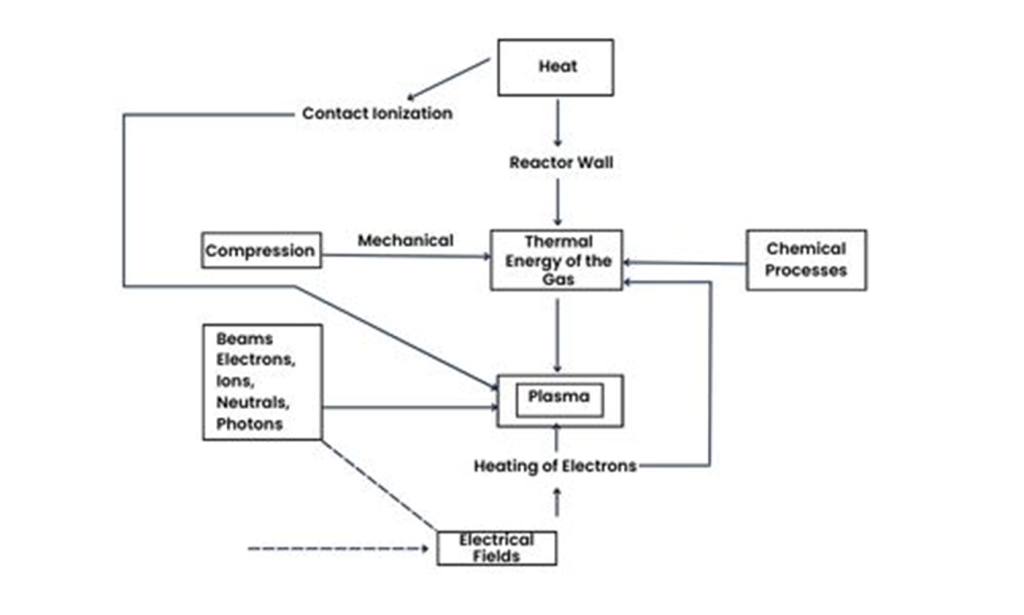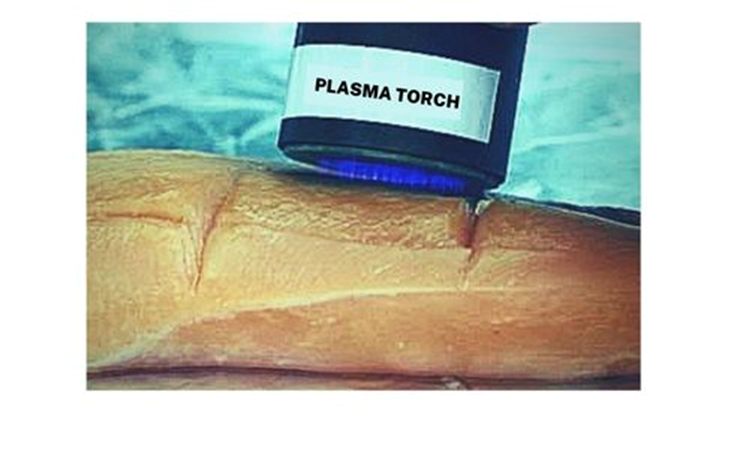INTRODUCTION
- Cold Plasma is one of the types of food processing that destroys germs that contaminate meat, poultry, fruits and vegetables.
- Various methods for sterilising food and ensuring food safety have been implemented. Cold plasma is an example of recent developments in the food processing industry, This versatile sanitising technique only needs electricity and a carrier gas like air, oxygen, nitrogen, or helium; chemical antimicrobials are unnecessary.
- UV light and reactive chemical byproducts of the cold plasma ionisation process are the main mechanisms of action.
- Numerous cold plasma systems are being developed that can run in low-pressure treatment chambers or at atmospheric pressures.
- Pathogens, including Salmonella, Escherichia coli O157:H7, Listeria monocytogenes, and Staphylococcus aureus, can all be reduced by more than five logarithmic counts.
- Depending on the food being treated and the processing circumstances, an adequate treatment timeframe can range from 120 seconds to as low as 3 seconds.
- The main constraints on the effective use of cold plasma are the lack of studies on the effects and the early stage of this technology. Depending on the kind of cold plasma generated, different cold plasma systems have different antibacterial mechanisms of action [1].
METHODS TO GENERATE PLASMA
- Energy is added to a neutral gas to cause the production of charge carriers, which creates plasmas. When electrons or photons strike neutral atoms and molecules in the feed gas with enough energy, they form electrons and ions in the gas phase (electron-impact ionisation or photo ionisation).
- Several ways provide energy to generate plasma in a neutral gas. One option is to provide thermal energy, which is employed as the primary energy source in exothermic chemical reactions of molecules, such as in flames. The gas can heat up to the point of plasma production when compressed adiabatically.
- Energy beams moderated in a gas volume are another method of supplying energy to a gas reservoir. A benefit of neutral particle beams is that they are unaffected by magnetic and electric forces. In fusion devices, neutral beams are typically used for plasma heating or maintenance.
- A low-temperature plasma is most frequently created and maintained for technological and technical applications by applying an electric field to a neutral gas. A small number of electrons and ions are always present in any volume of neutral gas. These particles are created, for instance, when cosmic rays or radioactive radiation interact with the gas [2].
VARIOUS WAYS OF SUPPLYING THE NECESSARY ENERGY FOR PLASMA GENERATION

Figure 1: Plasma generation process [2]
BENEFITS OF COLD PLASMA OVER OTHER FOOD SAFETY TECHNOLOGIES
- It is possible to disinfect products contaminated with microorganisms using cold plasma. In contrast to light (such as UV light decontamination), plasma is distributed uniformly around items, preventing “shadow effects” and guaranteeing that the entire product is cleaned.
- There is currently no mild surface cleaning method available for things like chopped vegetables and fresh meat; cold plasma could be used instead. Surfaces could be cleaned with cold plasma before packaging or as part of the packaging procedure.
- Even with the added requirement for carrier gas, plasma technologies’ electronics and longevity are equivalent to UV-C systems in terms of energy consumption and cost-effectiveness for treating food. In addition, atmospheric plasmas with high concentrations of bactericidal molecules (> 100 ppm ozone, nitric oxides, peroxides, etc.) are produced quickly and efficiently at room temperature, with little to no product heating.
- A few hundred watts of electricity and a source of compressed air or another gas are needed for atmospheric plasma technology (APT); occasionally, a gas blend is utilised depending on the reactive gas species being created. With product temperature increases of less than 5°C, APT can produce bactericidal molecules in situ extremely effectively using only air. The technology is expanding into new markets and applications due to its adaptability and distinctive processing capabilities[2].
ADVANTAGES
- Cold Plasma Processing Technology is a novel, rapid sterilisation/preservation method (sterilisation takes only a few minutes).
- The surface treatment method does not impact the food’s vitamins and nutrients.
- The process runs at standard temperatures (ideal for thermolabile products).
- Any infection can be rendered inactive depending on the type of plasma.
- Low operating costs (cost of natural gases and electricity).
- Environment friendly (uses natural gases including nitrogen, argon, air, hydrogen and oxygen) [2].
COLD PLASMA TO KILL BACTERIA FOR RAW CHICKEN
- Over 70% of the tested raw chicken meat contains pathogens, including Salmonella and Campylobacter. A food safety team at Drexel University in Pennsylvania recently used high-energy, low-temperature plasma to kill undesirable microorganisms, leaving the product unaltered [2].

Figure 2: A plasma torch applied to uncooked chicken
MODIFICATION OF FOOD PACKAGING POLYMERS
POLYETHYLENE [PE]
- One of the simplest polymers utilised in food packaging in terms of structure is PE. Commercially available PE comes in various densities and is distinguished by various WVTR (water vapour transfer rate), GTR (gas transmission rate), tensile strength, heat sealing, and other qualities.
- This allows food producers to select the best package form for their products.
- However, most cold plasma research has focused on PE surface changes because of PE’s low surface energy.
- It has been reported to characterise PE’s surface using CO2, H2O, and CO2/H2O plasma.
Polyethylene terphthalate [PET]
- PET is a material of choice for food packaging because of its many advantageous qualities, including good strength, stiffness, high strength-to-weight ratio, transparency, thermal stability, gas barrier property, chemical resistance, and formability.
- Like other synthetic polymers, PET’s reduced surface energy calls for surface modification to achieve acceptable adhesion, printing, and dyeing qualities.
- The PET film’s crystalline structure significantly determines how the surface energy changes after CP treatments.
- Studies on the characterisation of the plasma-treated PET film using the plasma of oxygen, carbon dioxide, nitrogen, and helium have been published.
Food packaging surface sterilisation
- In many circumstances, the packaging process is a critical control point in a hazard analysis critical control point (HACCP) system, and most regulatory rules include microbiological requirements for food packaging materials. Food packaging materials are designed to protect food from deterioration, damage, and outside contamination while maintaining food quality along the distribution and storage chain. Using PET foil substrates and typical treatment periods of 5 s, Schneider et al. (2005) evaluated the scalability of a plasma array system (Duo-Plasmaline®) for industrial applications and compared the performance to a laboratory-size system (Plasmodul®). The spore reduction kinetics for both systems point to the method’s scalability[2].
DISADVANTAGES
- There are certain drawbacks to plasma processing, including a rise in lipid oxidation, a drop in colour, a loss of fruit firmness, and an increase in acidity, among others.
- The most significant issue was the increase in the peroxide value of walnuts by 20% at increased power and treatment times. In the case of samples of peanuts treated with plasma, similar outcomes were seen. This may be because radicals can oxidise lipid molecules, which increases the peroxide value.
- After being exposed to atmospheric non-equilibrium plasma for 5 minutes, the spinach leaves’ discolouration and wilting effects were noticed.
- Because the plasma effect is a surface phenomenon, it is not viable to employ this technique to inactivate endogenous enzymes present in whole fruits in their natural state. Another drawback of direct plasma application is that it makes fruits less solid.
- According to Kim et al., the pH value of milk decreased after 10 minutes of plasma treatment [3].





